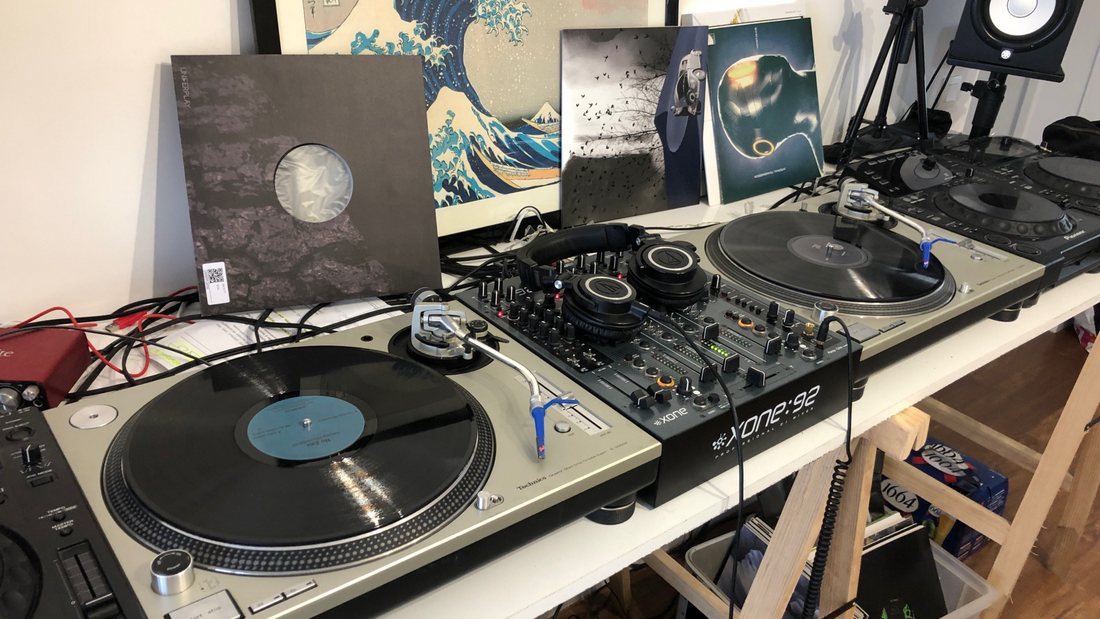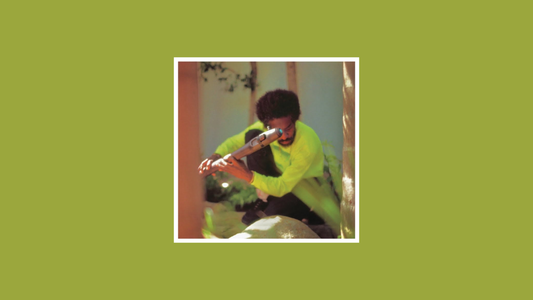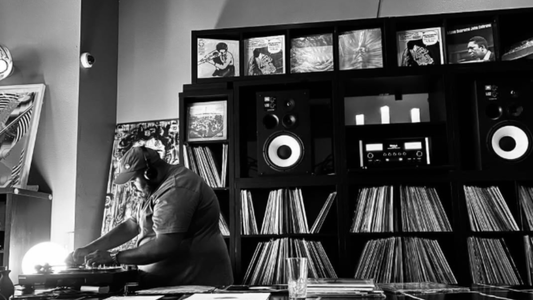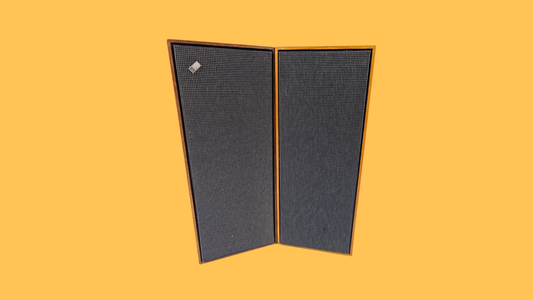
Technics — The Direct-Drive That Rewired the World
By Rafi Mercer
There is a moment, in almost every listening bar, when the room falls still before the record begins. A faint click of the cueing lever, the gentle drop of a stylus, and then — silence, charged with expectation. And more often than not, if you trace that sound back to its source, you’ll find it spinning on a platter made in Japan. The Technics SL-1200 is not just a turntable. It is an instrument of cultural transmission, a machine that carried vinyl from domestic fidelity into the public sphere, bridging the sanctity of the jazz kissa with the electricity of the block party.
When Matsushita (now Panasonic) introduced the first SL direct-drive models in 1970, the audio world tilted. Until then, belt-drive decks had been the dominant path, with their gentle pulleys and suspensions promising isolation from rumble and noise. But Technics did something radical: they placed the motor directly under the platter. This wasn’t engineering for romance — it was engineering for torque. And that torque, that instant start and stop, would become the heartbeat of a thousand different cultures.
In Japan, it meant accuracy. The jazz kissa, those small sanctuaries of vinyl devotion, could trust that a record would play with unwavering pitch, no drift, no wow. A Miles Davis trumpet line on Kind of Blue, a Bill Evans chord, carried with the same stability from first groove to last. For the meticulous hosts who built their reputations on sonic detail, Technics represented certainty.
In New York, it meant something else entirely. The same torque that preserved piano notes in Tokyo allowed DJs in the Bronx to backspin, cut, and loop James Brown breaks into the foundations of hip hop. By the late 1970s, the SL-1200 had become more than a turntable — it was a performance tool, its pitch control slider turning time itself into an instrument. Here was a deck that could survive the rigours of a club floor, shrugging off cigarette ash and beer spills, and still hold its ground with broadcast-level fidelity.
That dual identity is what makes Technics the spine of so many listening bars today. It is at once the archivist and the provocateur — the librarian’s choice and the DJ’s weapon. To walk into a room and see a pair of SL-1200s on Isonoe feet, flanking a rotary mixer, is to recognise an unspoken pledge: this place cares about music as both heritage and living energy.
The design itself tells a story. The brushed aluminium, the strobe dots glowing under a quartz lock, the arm that feels both supple and indestructible — all of it speaks to a Japanese industrial aesthetic of the 1970s, where function was elevated by restraint. Unlike the glossy luxury of McIntosh or the wood-panel romance of Linn, Technics feels almost municipal. It was never about the fetish object. It was about permanence, about a tool that worked for everyone.
I’ve seen them everywhere: in the back room of a kissa in Shinjuku where a single Ortofon SPU cartridge rode a mono pressing of Coltrane; in a London bar where a MasterSounds rotary carried house 12-inches into the night; in a Brooklyn café where the staff cued Alice Coltrane between espressos. Always the same machine, always different outcomes. That is the quiet genius of the 1200 lineage.
In 2010, when Panasonic announced the end of production, it felt like a cultural funeral. Collectors hoarded, prices surged, and bars scrambled to secure pairs before they disappeared. But the story didn’t end there. In 2016, Technics returned, unveiling the SL-1200G — a re-engineered, heavyweight homage that reassured the faithful. Some cried foul at the price, but the message was clear: this deck was not nostalgia, it was continuity.
The truth is that listening culture owes a peculiar debt to this one machine. Without it, the fidelity of the jazz kissa might have stayed cloistered, and the physicality of hip hop might never have taken form. Without it, listening bars from Tokyo to New York might not share the same vocabulary of sound. The SL-1200 is both shrine and stage.
Next time you walk into a listening bar, pause for a second before the music begins. Watch the platter spin, notice the strobe steady, hear the faint motor hum in the silence. You are not just listening to a record. You are hearing the echo of a design that rewired the world.
Rafi Mercer writes about the spaces where music matters. For more stories from Tracks & Tales, subscribe, or click here to read more.














